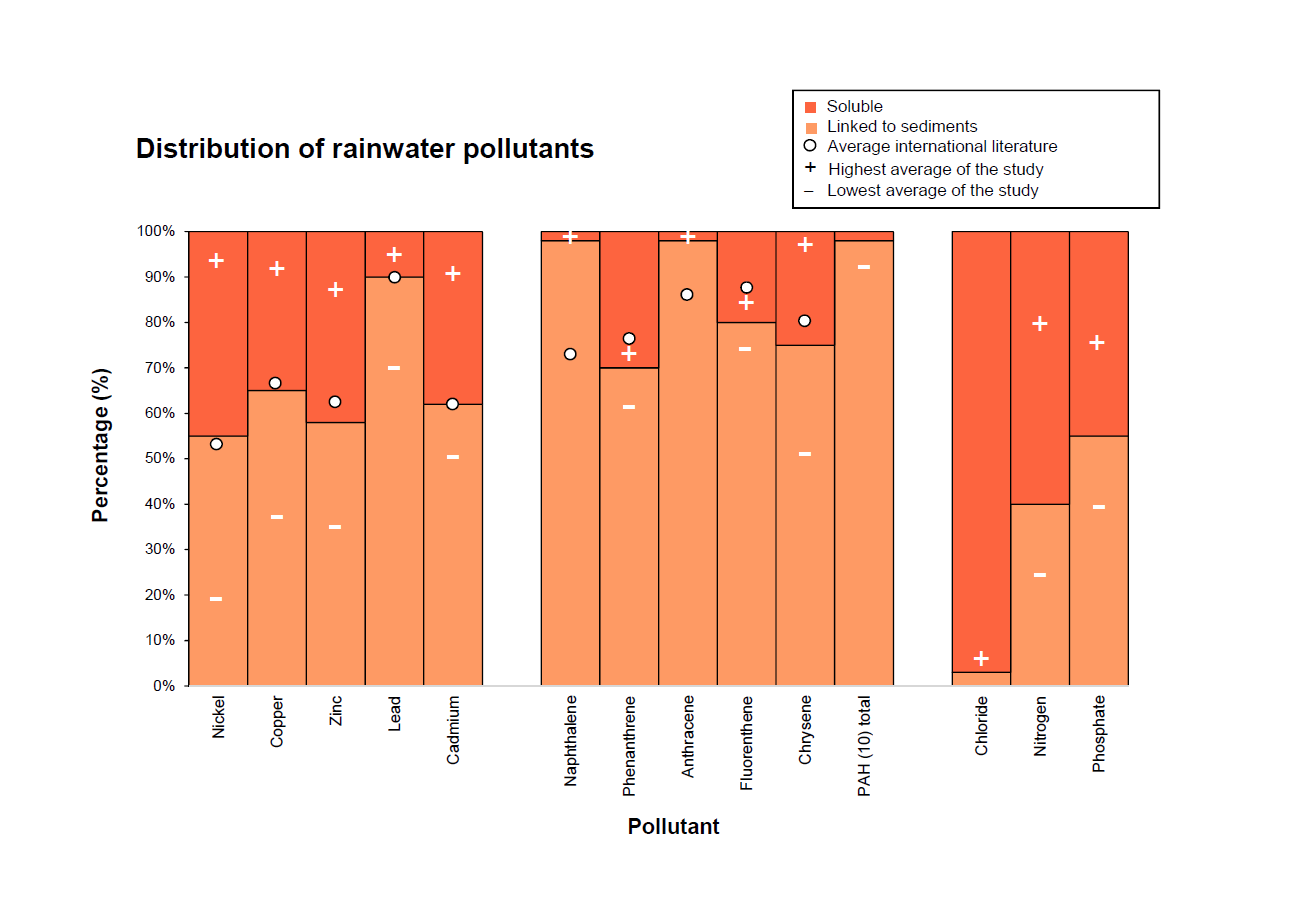Characteristic of pollutants
In urban areas, the level of pollution is dependent on many factors (traffic intensity, type of pavement, etc.). The pollutants present can be classified into two categories: pollutants in particulate form and pollutants in dissolved form. Pollutants in particulate form including Suspended Solids (SS) are an important part of stormwater pollution. In fact, at the scale of a watershed, the pollutants transported during rainy weather (hydrocarbons, PAHs, heavy metals, COD, and to a lesser extent BOD5, nitrogen, etc.) are partly fixed on the SS. In addition, much of this pollution is associated with fine particles less than 100 microns. As an indication, the table below illustrates the average proportions of pollutants present in runoff in dissolved and undissolved form.

Depending on the nature of the watershed (road, industrial, etc.), the concentration of different pollutants can vary significantly and may also lead to a risk of accidental oil pollution, as illustrated by the table below.
| Activity / Parameters | MES mg/l |
DCO mg/l |
Hydrocarbons µg/l |
HAP's µg/l |
Lead µg/l |
Zinc µg/l |
| Residential area | 53 - 190 | 79 - 142 | <200 - 500 | 2'819 - 3'718 | 12 - 56 | 92 - 170 |
| Ind. Zone access road | 540 - 590 | 156 - 177 | 200 - 1'200 | 5'024 - 13'473 | 79 - 100 | 700 - 1'100 |
| Heavy traffic road | 180 - 600 | 79 - 617 | 700 - 2'000 | 3'409 - 40'745 | 40 - 71 | 430 - 1'150 |
| Office carpark | 22 - 500 | 12 - 175 | <100 - 1'100 | 460 - 12'479 | <5 - 90 | <50 - 530 |
| Commercial zone carpark | 45 - 242 | 93 - 395 | <20 - 2'400 | 640 - 3'890 | 50 - 280 | 220 - 1'000 |
Table 1: Pollutant concentration according to the watershed type
Therefore, the use of a treatment system adapted to the case (nature of the watershed, hydraulic pipelines, discharge objectives and treatment flow) must be studied.
This control of discharge in rainy weather is framed by:
- The European Water Framework Directive which sets a clear objective: to reach by 2015 the ecological and chemical "good state" of all natural aquatic environments and to preserve those in very good condition.
- The regulatory requirements defined by the discharge agreements (STORM directive)
For this purpose we offer different technical options such as:
- The SediPipe® system
- The lamellar settling system
- The Stoppol® system
- The First Defense® system
- The Downstream Defender® system





